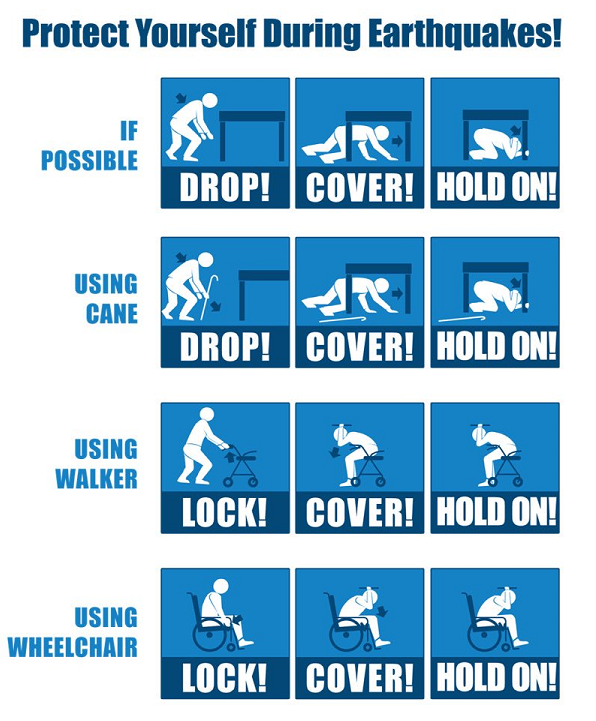Assisting Individuals with Access or Functional Needs
The evacuation of individuals with access or functional needs will be given high priority in all emergency situations. During any emergency, it is important that you are familiar with your needs during a building or campus evacuation. For students, we highly encourage you to convey these needs to your instructor(s) at the beginning of each semester. It is always better to have the conversation now and build a personal evacuation plan in advance than to seek assistance in the midst of an emergency. While you are attending classes, be aware of all exits and situate yourself near a doorway. Become familiar with the buildings you spend the most time in and all possible emergency exits routes.
The following guidelines are important to follow:
- Use the buddy system and alternate for each class. Individuals with disabilities should prepare for an emergency ahead of time by instructing a classmate, instructor, or coworker on how to best assist in the event of an emergency.
- If assistance is not immediately available, remain near a stairwell landing or in the elevator lobby area. Rescue personnel will first check all exit corridors and stairwells for trapped individuals.
- Those with voice or speech impairments may consider carrying a whistle or other personal audible device as a means of attracting the attention of others.
- Be familiar with the different types of alarm signals in campus buildings.
- Leave your personal belongings at your desk to avoid wasting time.
- Do NOT re-enter a building until it is deemed safe to do so by emergency personnel.
- Always remain calm, help is on the way.
Do NOT use elevators unless authorized to do so by police or fire personnel. Elevators may fail during a fire, earthquake or flood.
Evacuation is difficult and uncomfortable for both the rescuers and those being assisted. Some individuals have conditions that may be aggravated or triggered if they are moved incorrectly. Remember that environmental conditions such as smoke, debris, or power outages may further complicate evacuation efforts.
All members of the campus community should familiarize themselves with these procedures and best practices in order to assist in planning for the evacuation of individuals with physical and sensory disabilities.
Earthquake Response:

If it is difficult for you to "Drop, Cover, and Hold On" here are some considerations:
-
If you are in a wheelchair, recliner or bed, do not try to transfer to or from your chair during the shaking. Wait until the shaking stops to transfer.
-
Stay put. Cover your head and neck with your arms or a pillow until the shaking stops.
-
Wheelchair user: lock your wheels, bend down, and cover your head and neck with your arms as best you can.
-
The force of the earthquake may knock you off your feet or throw you to the ground. If you have mobility or balance issues, the shaking may make it even harder to get to a safe place and get safely to the ground. Have pre-identified safe spots in the areas you spend the most time in.
-
If you have difficulty getting back up after dropping under a desk or able, consider using alternate methods of Drop, Cover, and Hold On to protect yourself. Make arrangements with family or coworkers in advance to have someone check on you in case you may need assistance.
-
If it helps – count out loud until the earthquake stops. It can help keep you calm and focused on remembering what to do.





